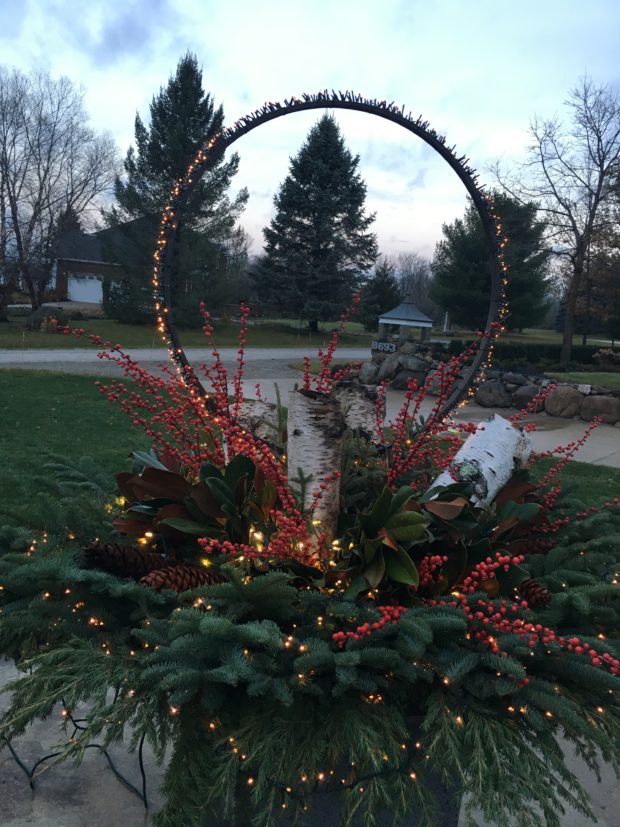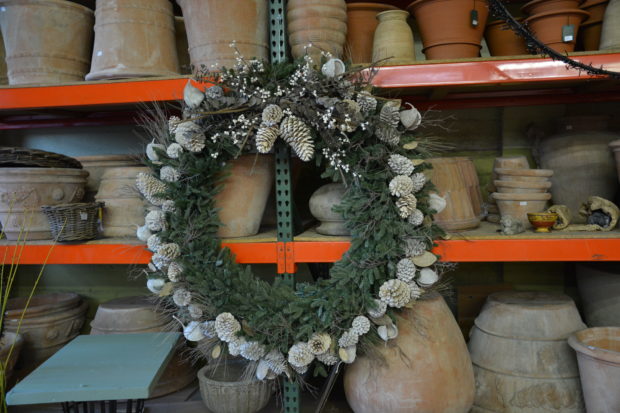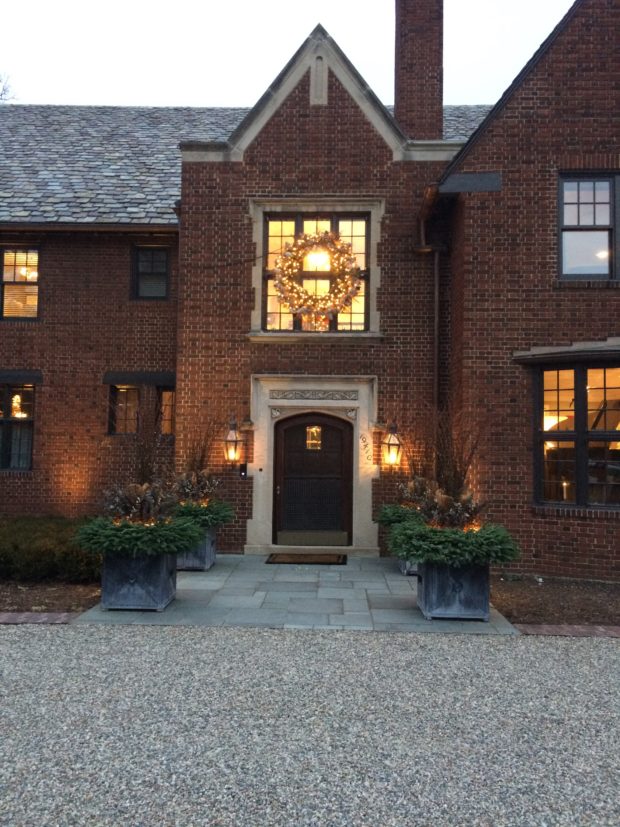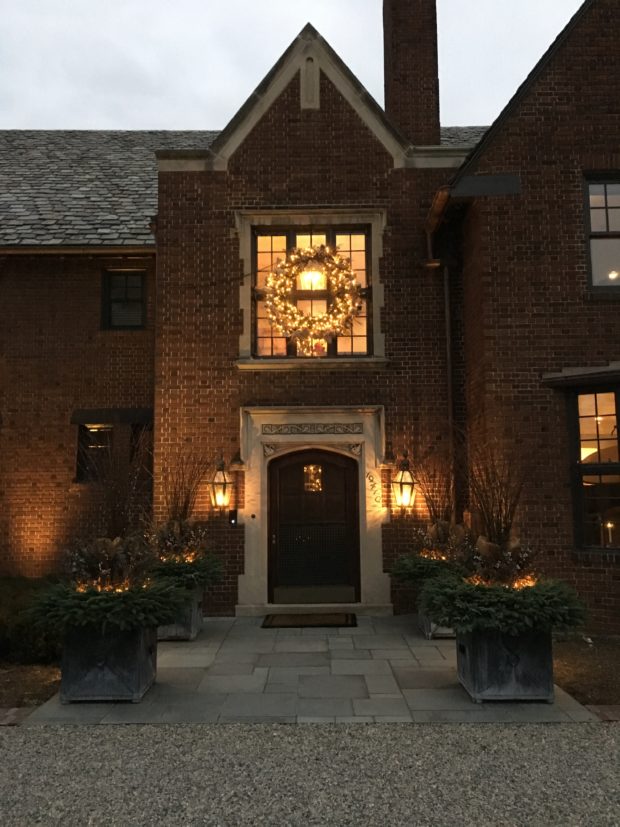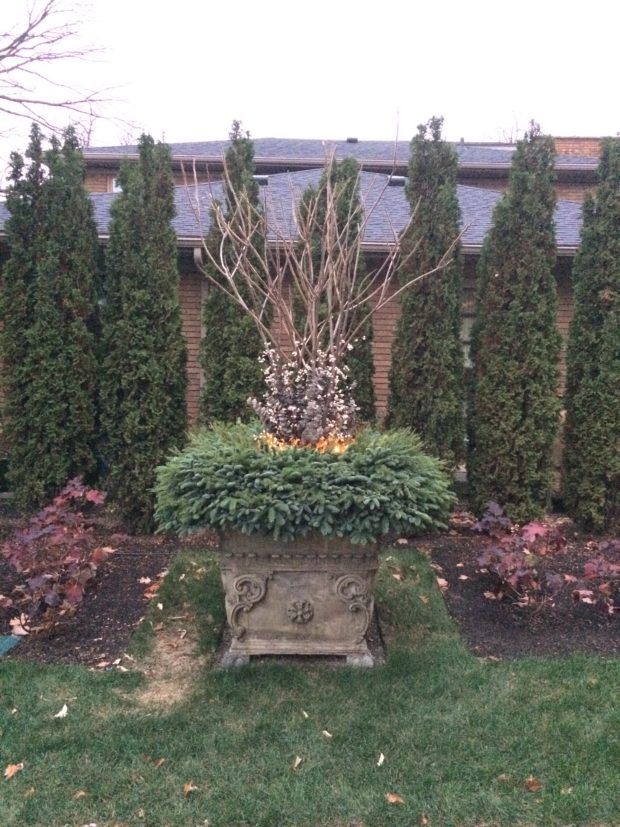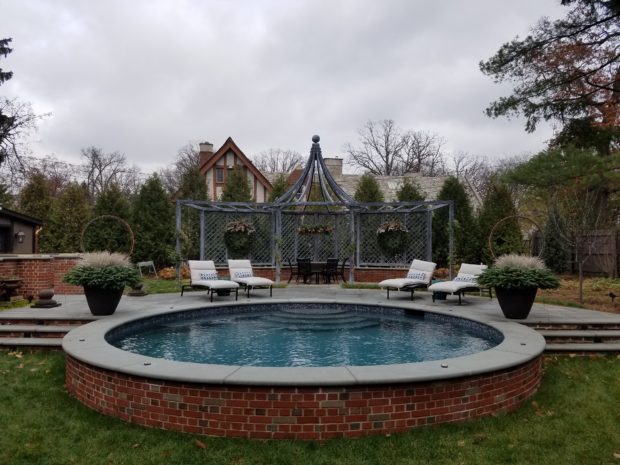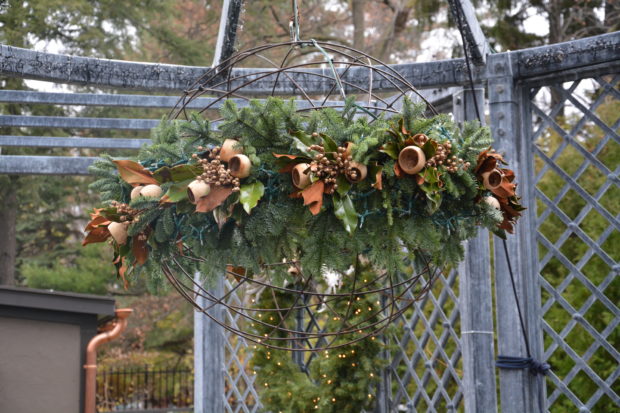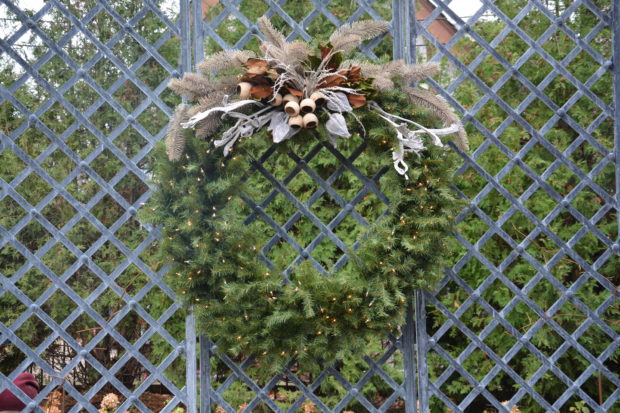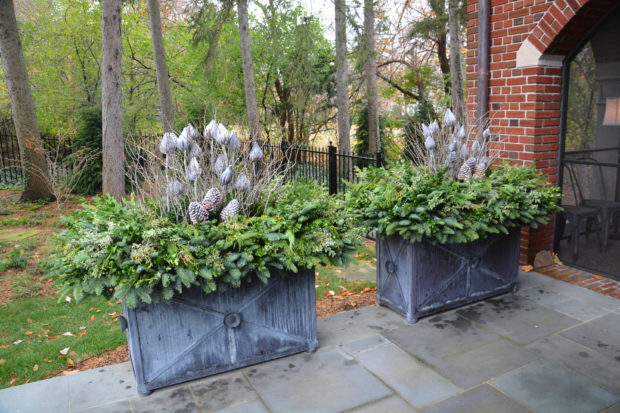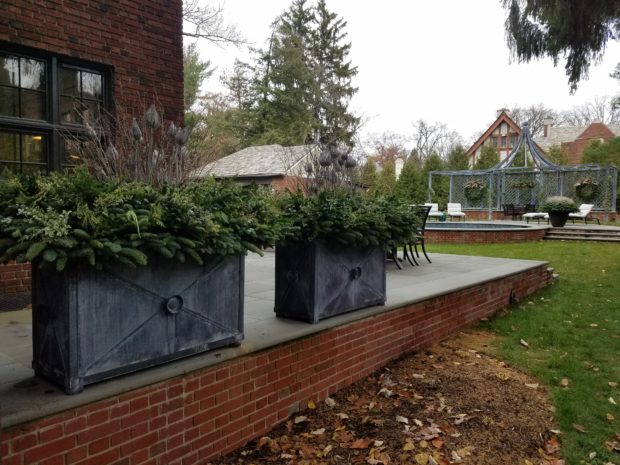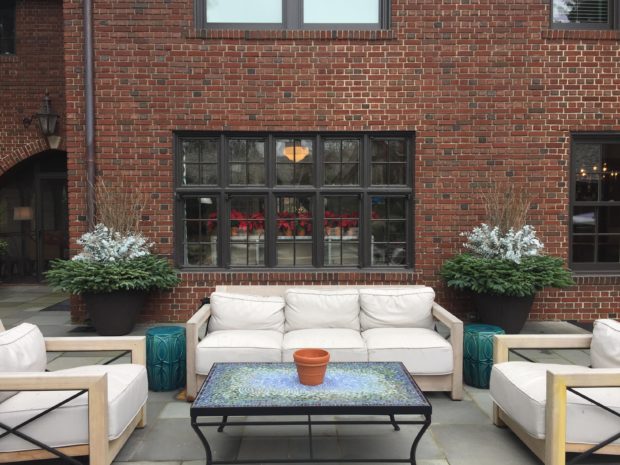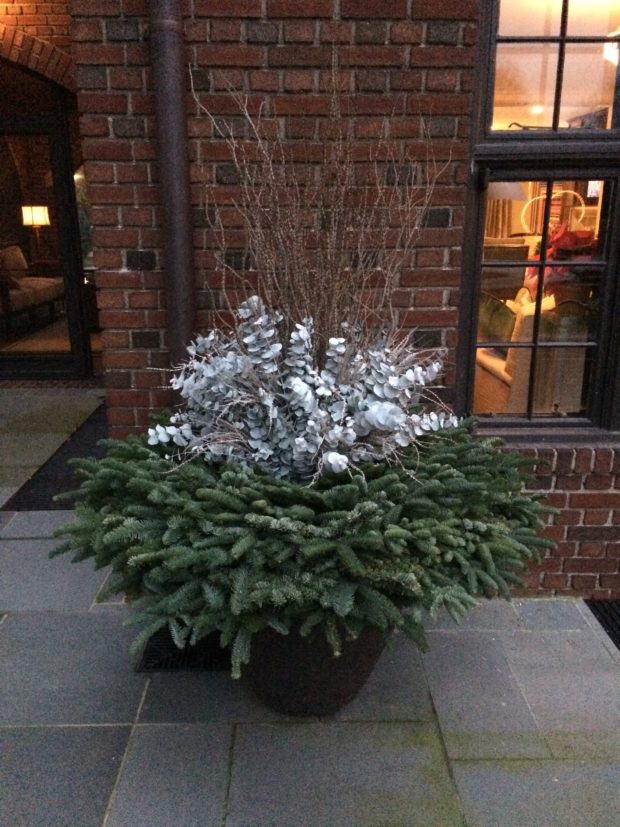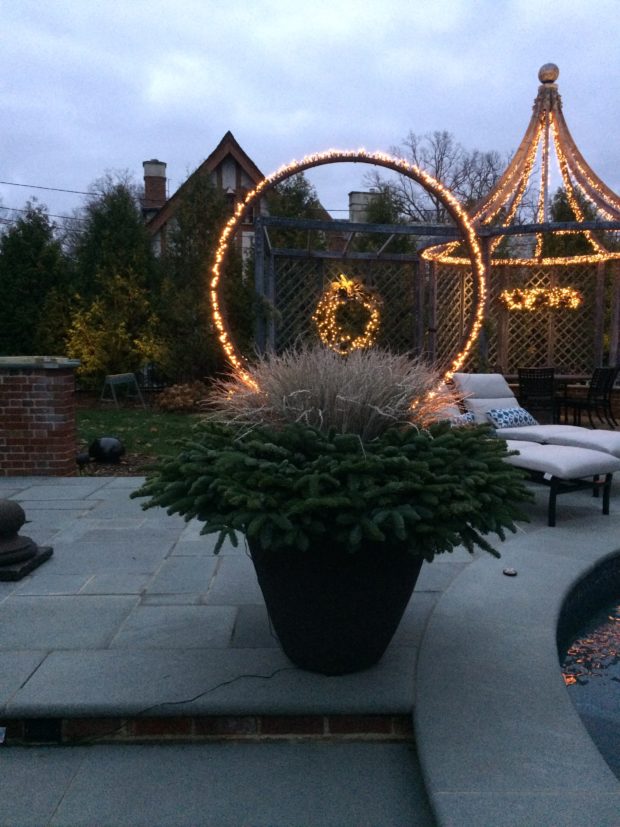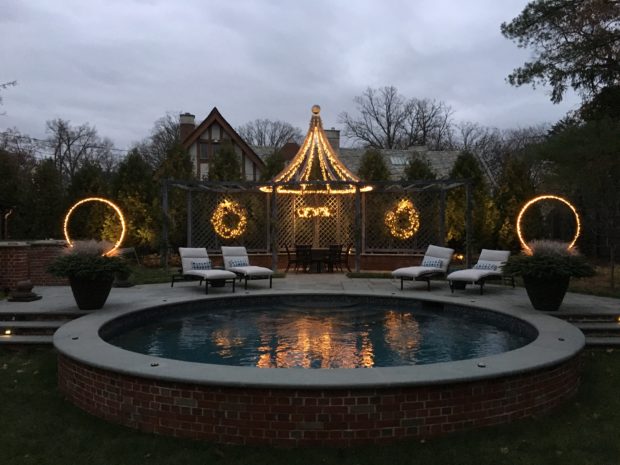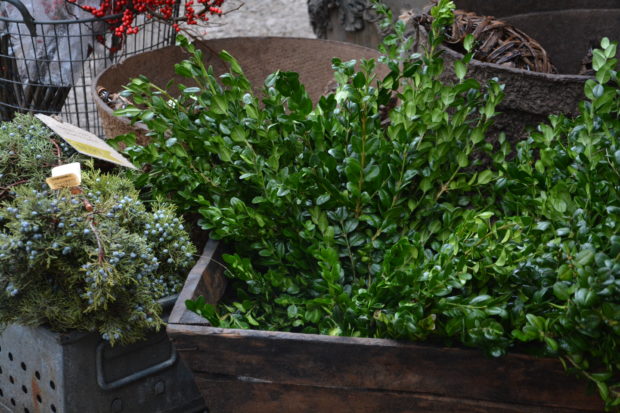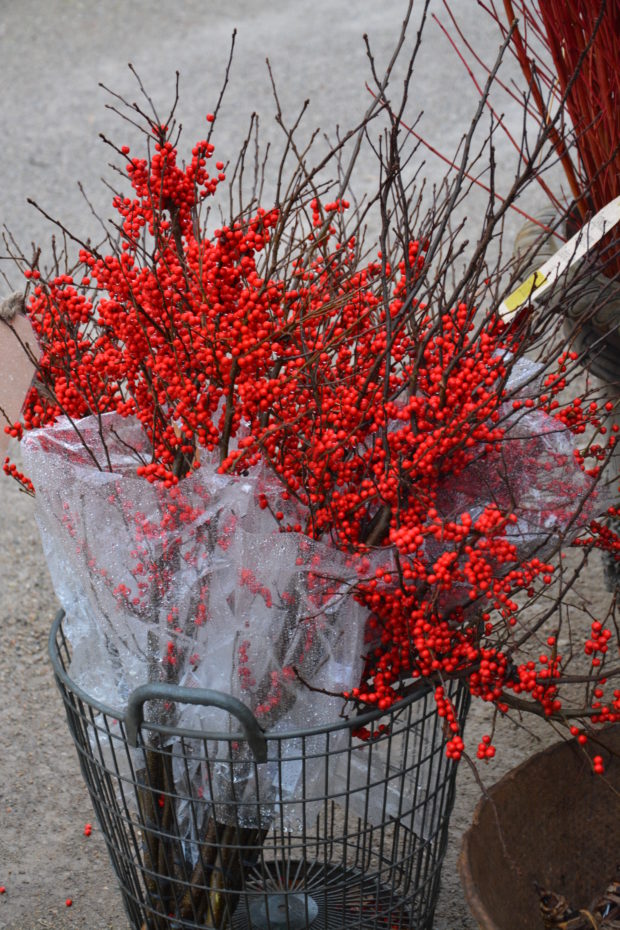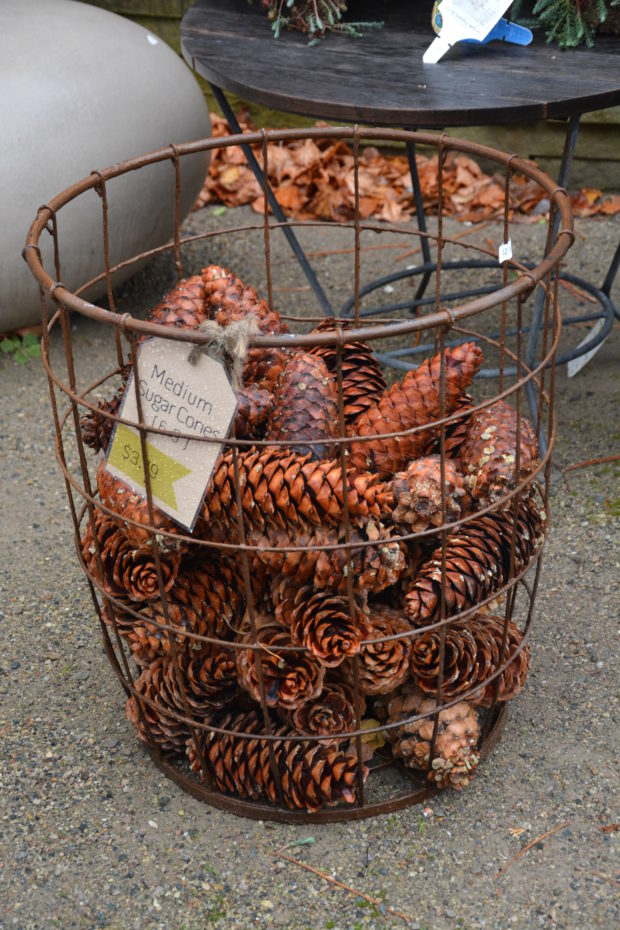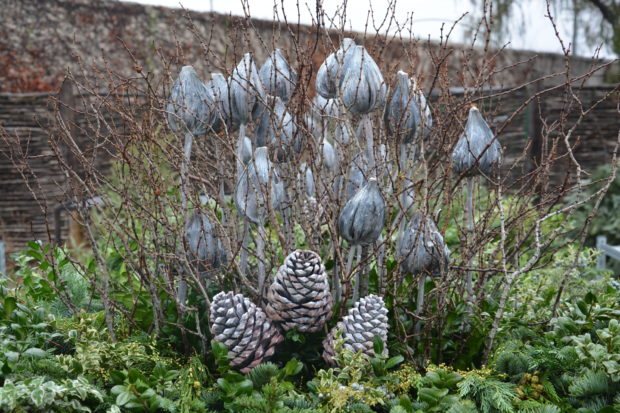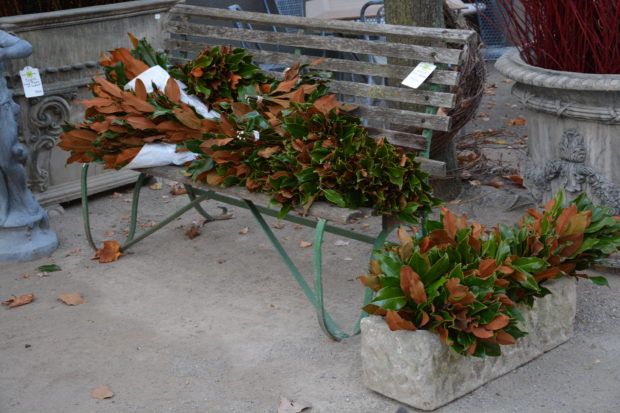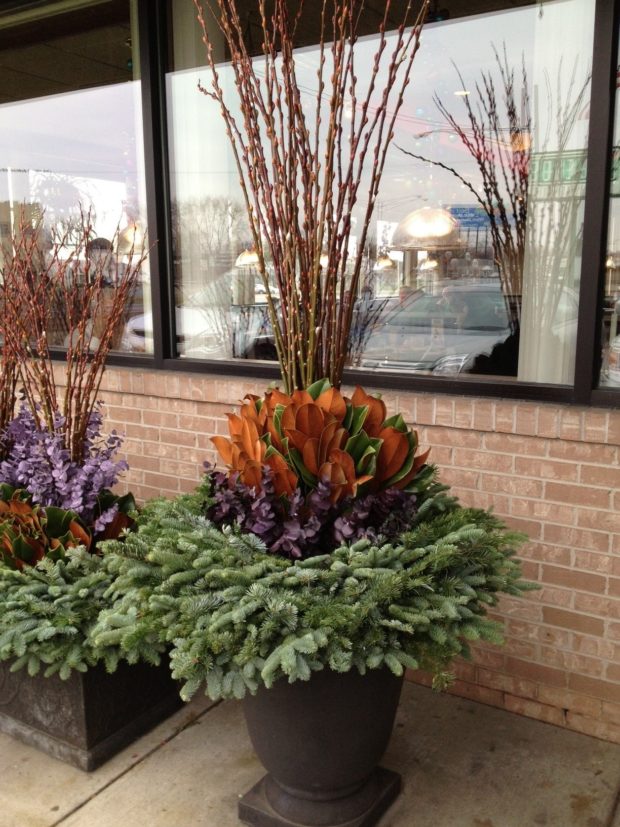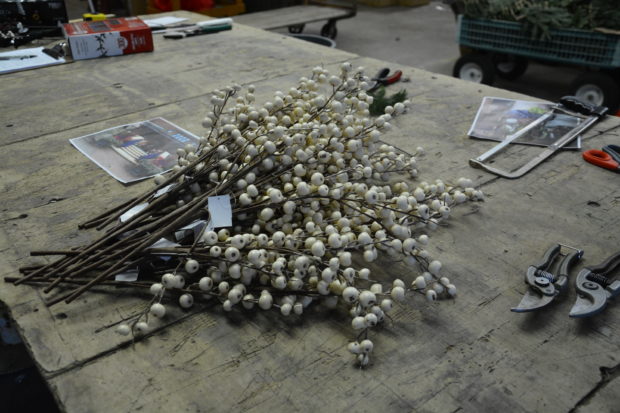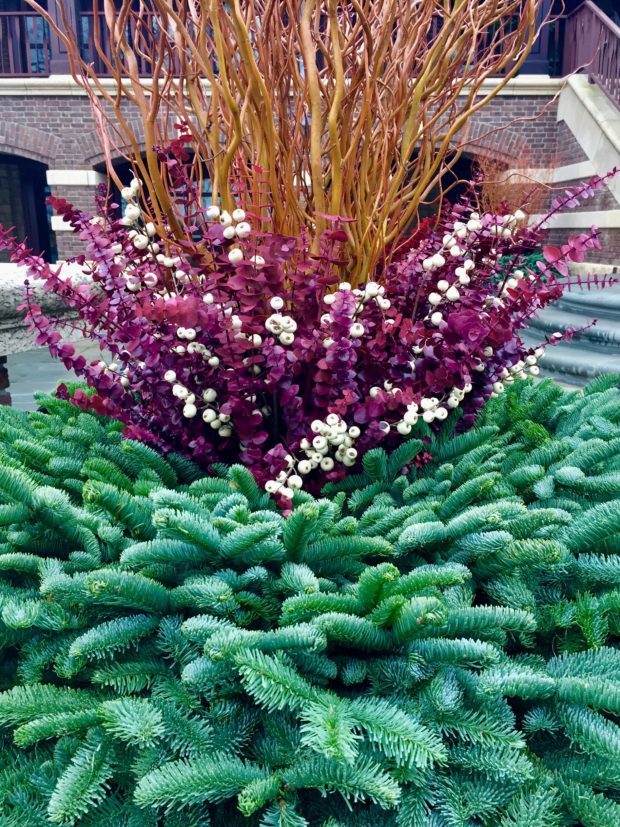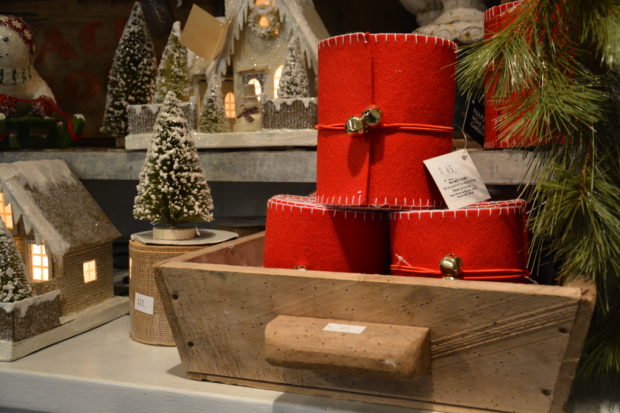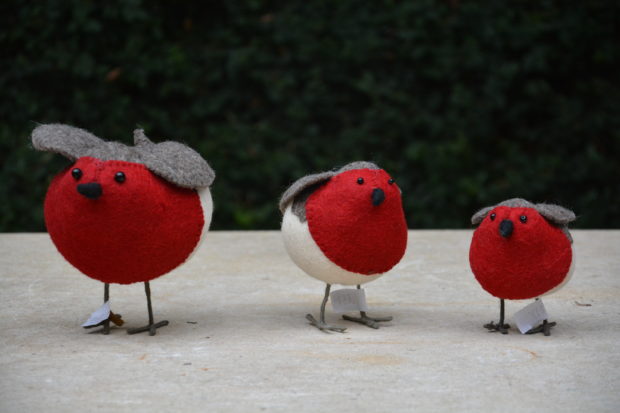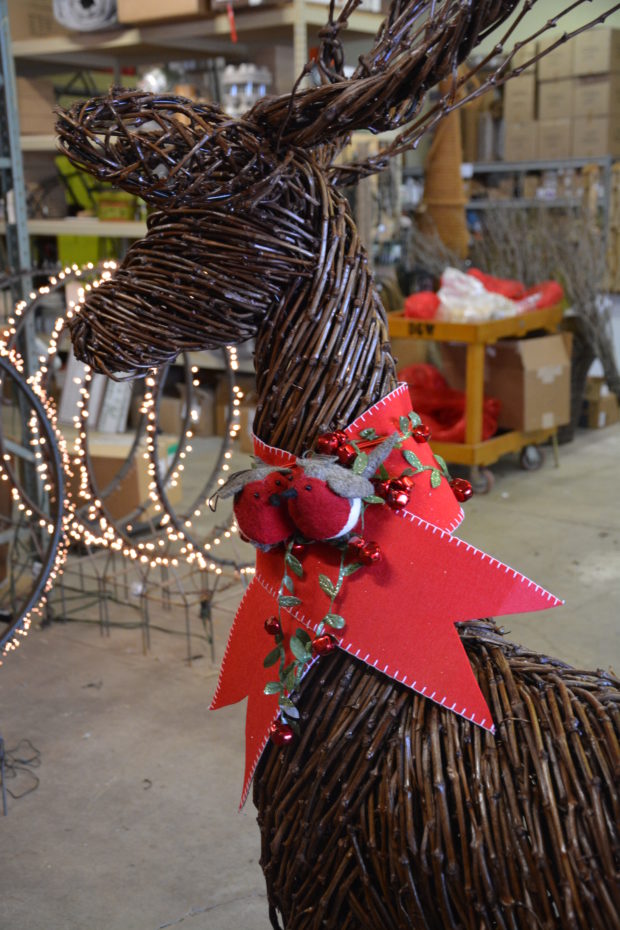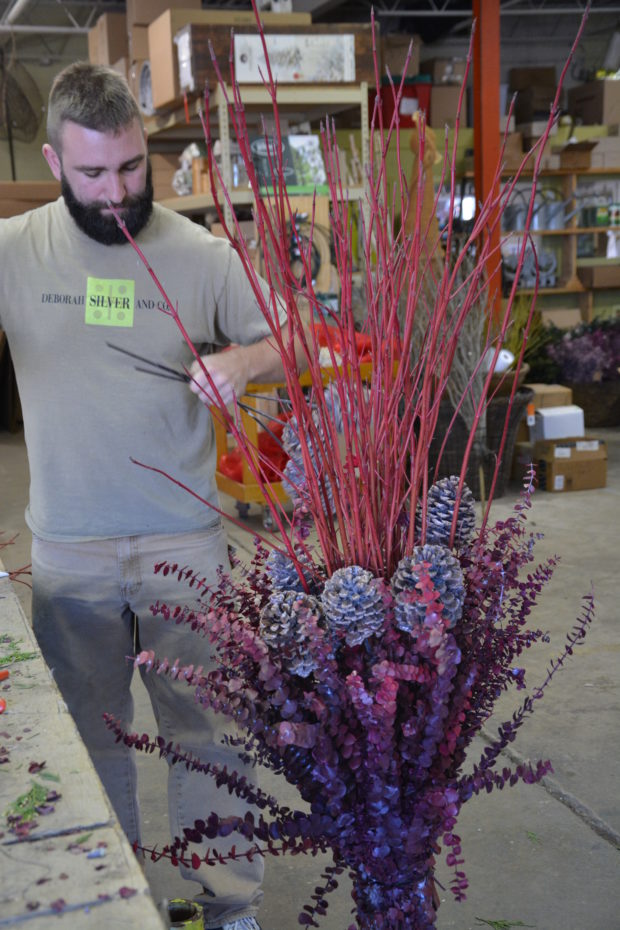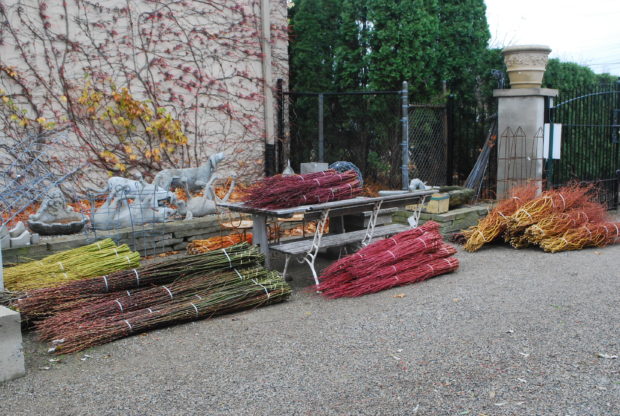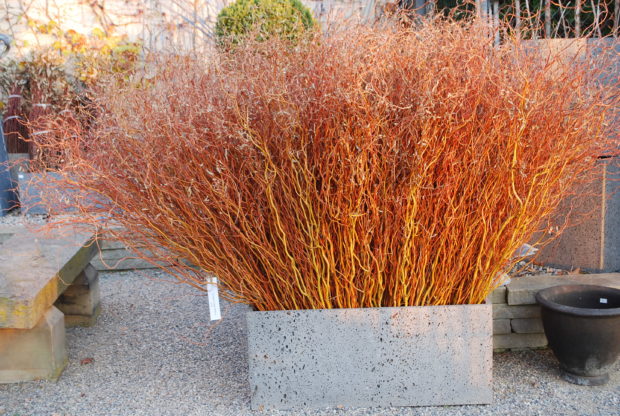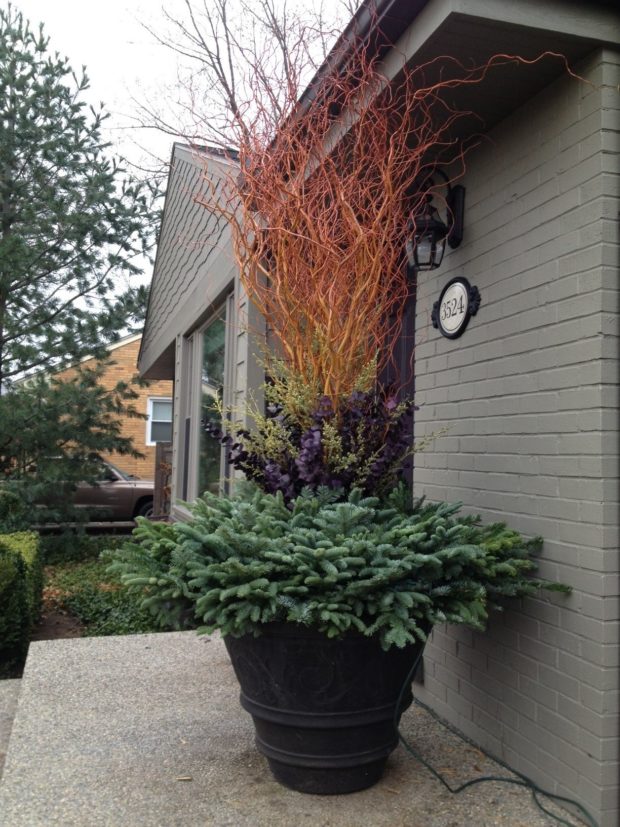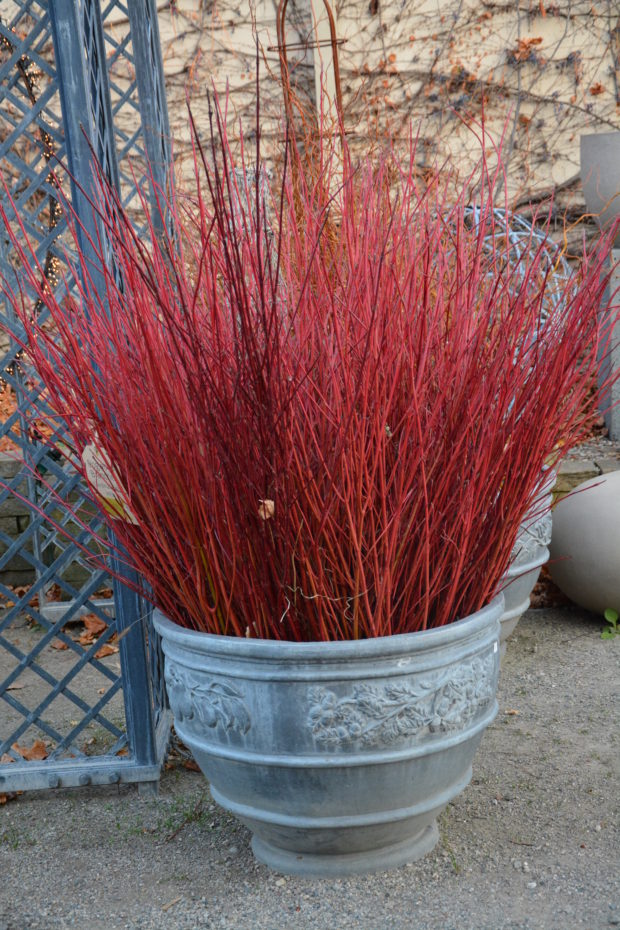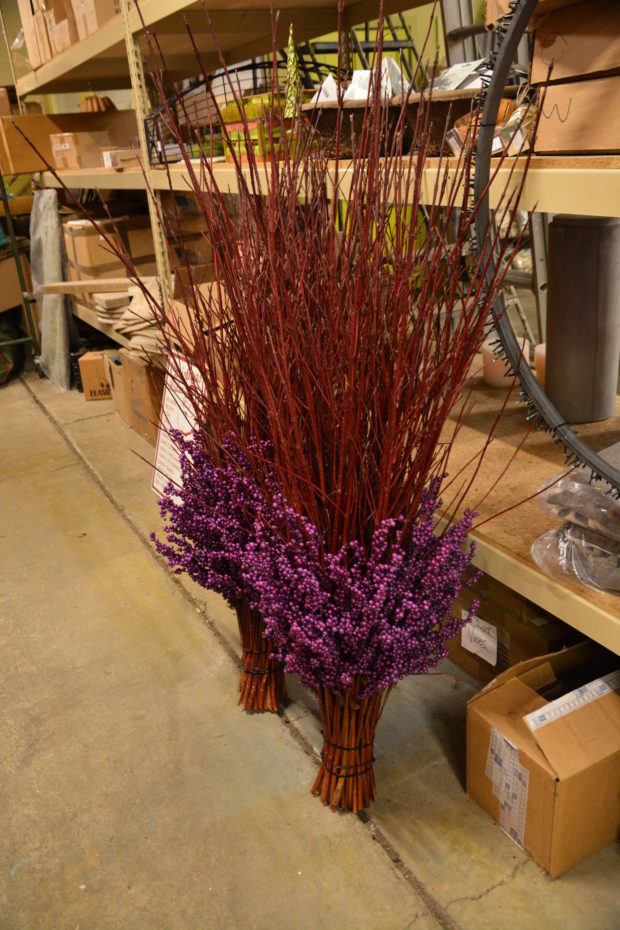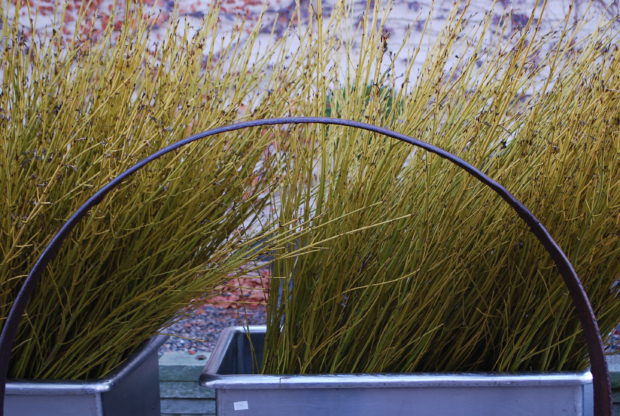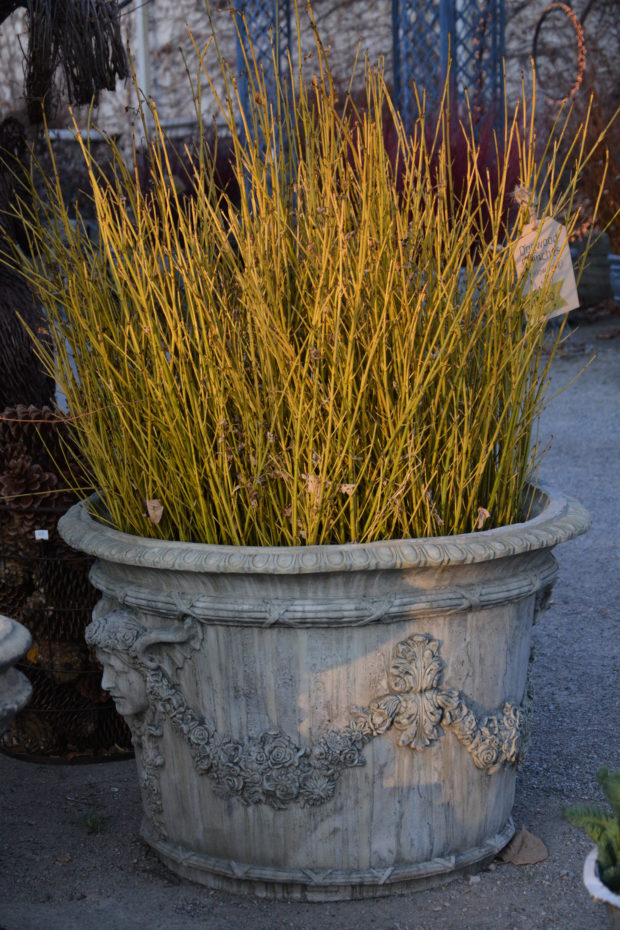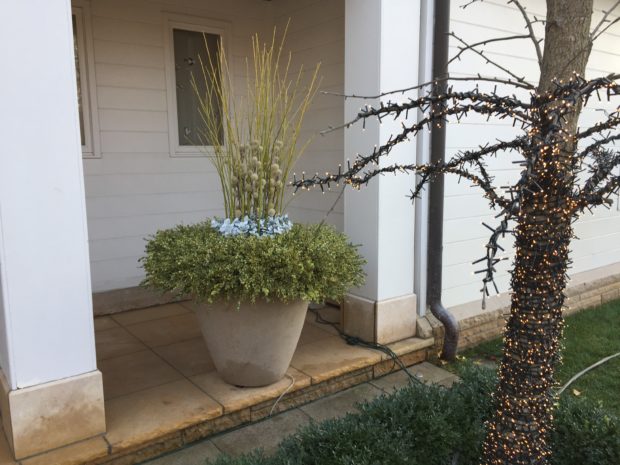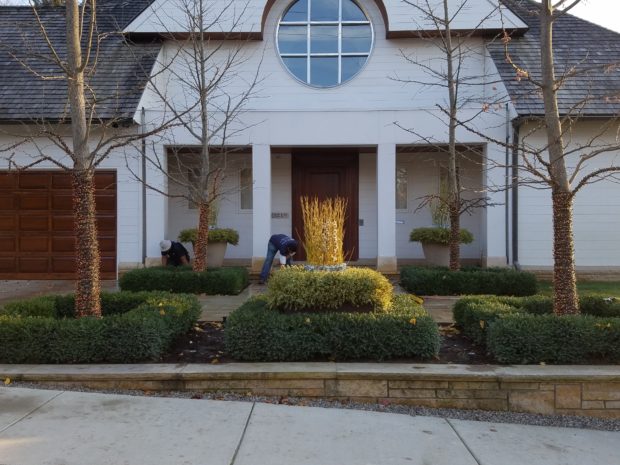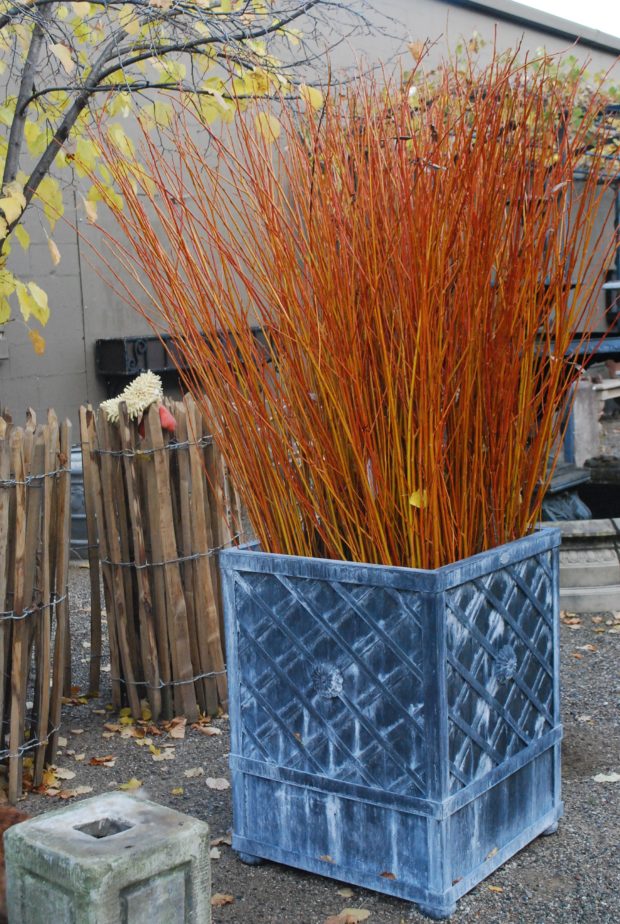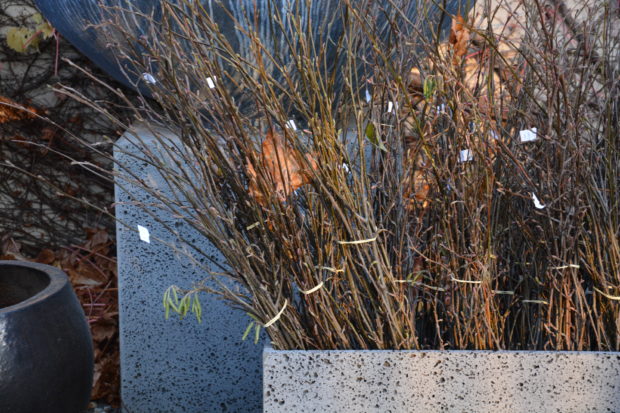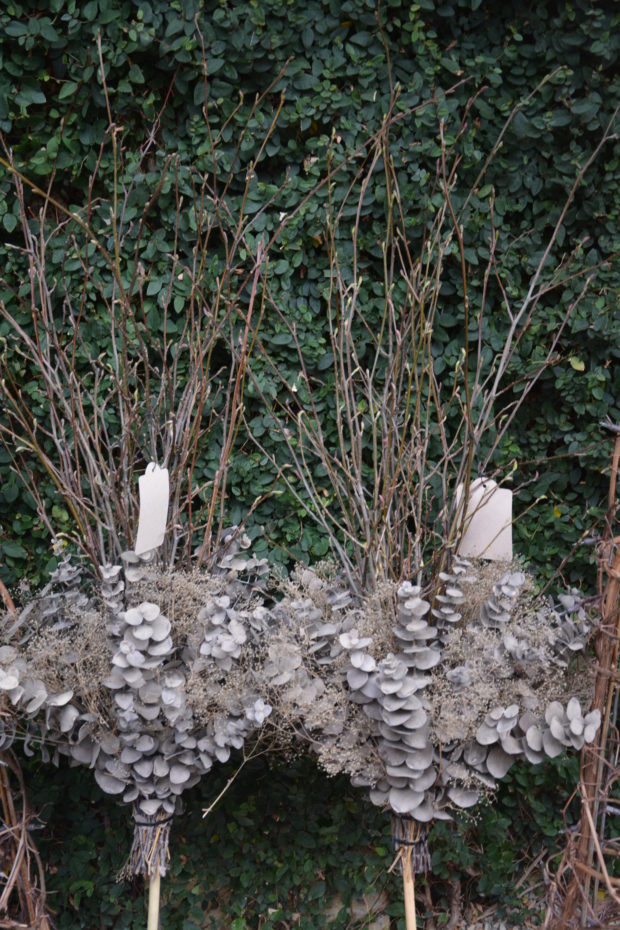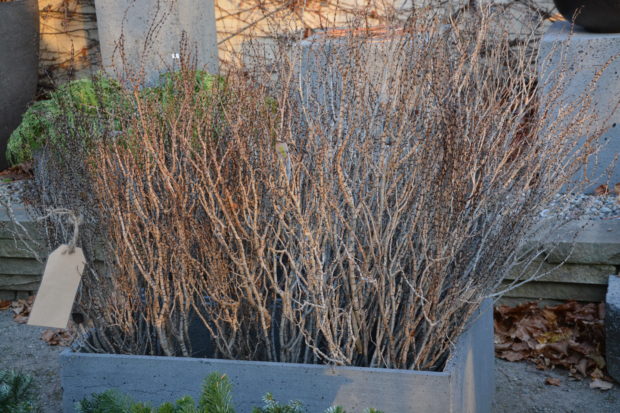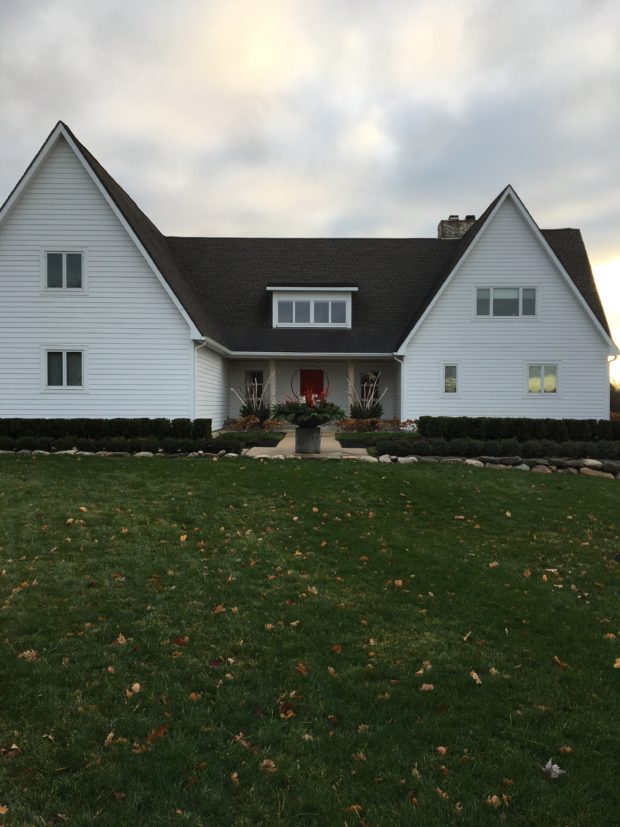 I posted some time ago about the landscape I designed for my clients who live in a rural area outside Ann Arbor. They edited and installed that landscape on their own – to everyone’s great satisfaction. I was happy indeed that they took my plan to heart, and edited it to reflect their point of view. Late this fall they planted a wide ribbon of grape hyacinths in the lawn beginning near the large round planter and running all the way to the road. There’s nothing like having a river of grape hyacinths to look forward to in the spring, is there? Eventually, there may be some trees on either side of that river. Their last garden project of the season-the winter pots. They came to the shop the other day to with to consult with me about their plans, and look at materials. Of course they would do their winter pots on their own.
I posted some time ago about the landscape I designed for my clients who live in a rural area outside Ann Arbor. They edited and installed that landscape on their own – to everyone’s great satisfaction. I was happy indeed that they took my plan to heart, and edited it to reflect their point of view. Late this fall they planted a wide ribbon of grape hyacinths in the lawn beginning near the large round planter and running all the way to the road. There’s nothing like having a river of grape hyacinths to look forward to in the spring, is there? Eventually, there may be some trees on either side of that river. Their last garden project of the season-the winter pots. They came to the shop the other day to with to consult with me about their plans, and look at materials. Of course they would do their winter pots on their own.
 I spent plenty of time talking them through their design process. They knew they wanted to use cut white birch branches, and spruce tips. And they wanted to incorporate the color red. Their taste is tends towards the contemporary, but in a loose and brash way. Containers filled with natural materials informally arranged proved to be a strikingly beautiful contrast to their sober and spare landscape.
I spent plenty of time talking them through their design process. They knew they wanted to use cut white birch branches, and spruce tips. And they wanted to incorporate the color red. Their taste is tends towards the contemporary, but in a loose and brash way. Containers filled with natural materials informally arranged proved to be a strikingly beautiful contrast to their sober and spare landscape.
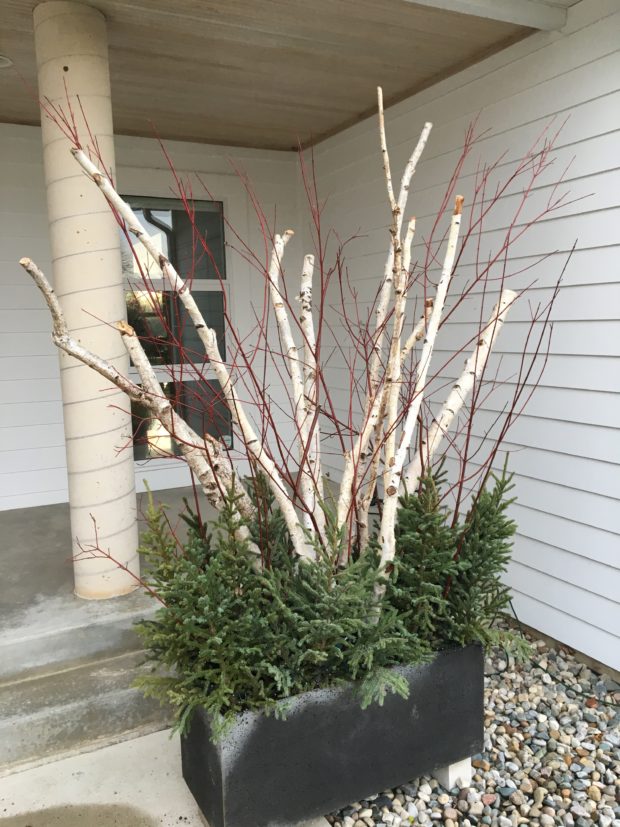 This post is not so much about what I advised them to do. It is primarily about what they did on their own. This winter pot is terrific. I was delighted when Rich sent me this group of photographs. The greens in the bottom of this container are spruce tips, from Minnesota. Dan had them shipped in. I have never seen them before. These spruce toppers sunk into the soil of a container looked like a forest of mini trees. This container is as good as it gets, in my opinion. It is relaxed, assured, and striking. The thin red twig branches against the stout birch branches-so beautiful.
This post is not so much about what I advised them to do. It is primarily about what they did on their own. This winter pot is terrific. I was delighted when Rich sent me this group of photographs. The greens in the bottom of this container are spruce tips, from Minnesota. Dan had them shipped in. I have never seen them before. These spruce toppers sunk into the soil of a container looked like a forest of mini trees. This container is as good as it gets, in my opinion. It is relaxed, assured, and striking. The thin red twig branches against the stout birch branches-so beautiful.
 I did advise them to light their pots. Their property is in a rural area. Absent a full moon, their property is shrouded in darkness. The light in the winter pots would be key to welcoming guests, and representing a warm winter. It took a bit of doing to convince them to spring for a 3′ diameter spiked light ring encircled with LED lights, but they eventually decided that my advice was good advice. After much discussion, they took that ring home with them. Set into their 5 foot diameter steel bowl container facing the road, that light ring not only illuminated what was in the pot, it lit up the walk to the front door.
I did advise them to light their pots. Their property is in a rural area. Absent a full moon, their property is shrouded in darkness. The light in the winter pots would be key to welcoming guests, and representing a warm winter. It took a bit of doing to convince them to spring for a 3′ diameter spiked light ring encircled with LED lights, but they eventually decided that my advice was good advice. After much discussion, they took that ring home with them. Set into their 5 foot diameter steel bowl container facing the road, that light ring not only illuminated what was in the pot, it lit up the walk to the front door. 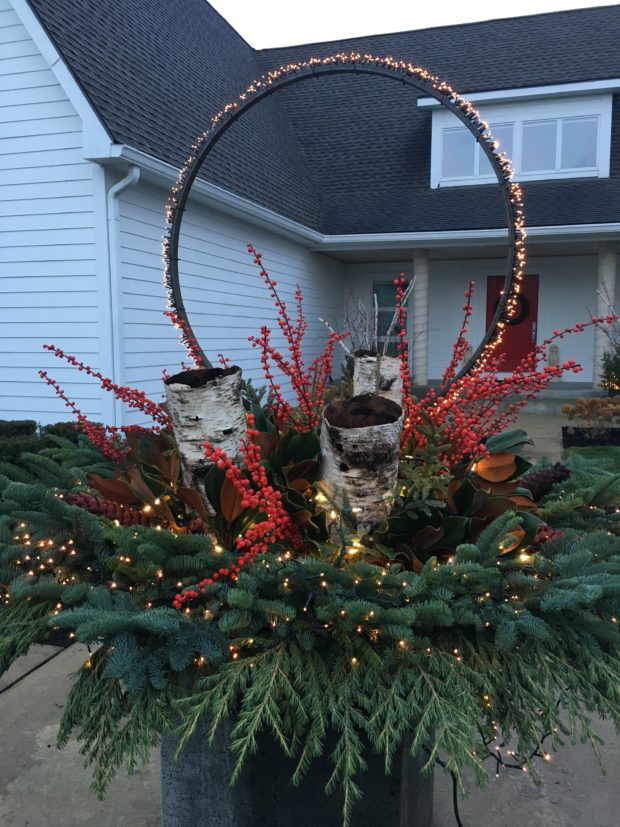 The materials they chose? Mountain hemlock, for its feathery texture, and its longevity as a cut green. Noble fir is a cut green whose stout stems amicably support lights, and obligingly stay green throughout the winter. The magnolia branches in this container feature big leaves. Those big glossy green leaves are a nod to romance. The Michigan winter is spare and gray. Cut magnolia is luscious – juicy looking. The hollow birch bark rounds are chubby and charming. The faux red berry stems hover over all. Happily, they will represent for many winters to come. The Lumineo warm LED light strings illuminate the greens.
The materials they chose? Mountain hemlock, for its feathery texture, and its longevity as a cut green. Noble fir is a cut green whose stout stems amicably support lights, and obligingly stay green throughout the winter. The magnolia branches in this container feature big leaves. Those big glossy green leaves are a nod to romance. The Michigan winter is spare and gray. Cut magnolia is luscious – juicy looking. The hollow birch bark rounds are chubby and charming. The faux red berry stems hover over all. Happily, they will represent for many winters to come. The Lumineo warm LED light strings illuminate the greens.
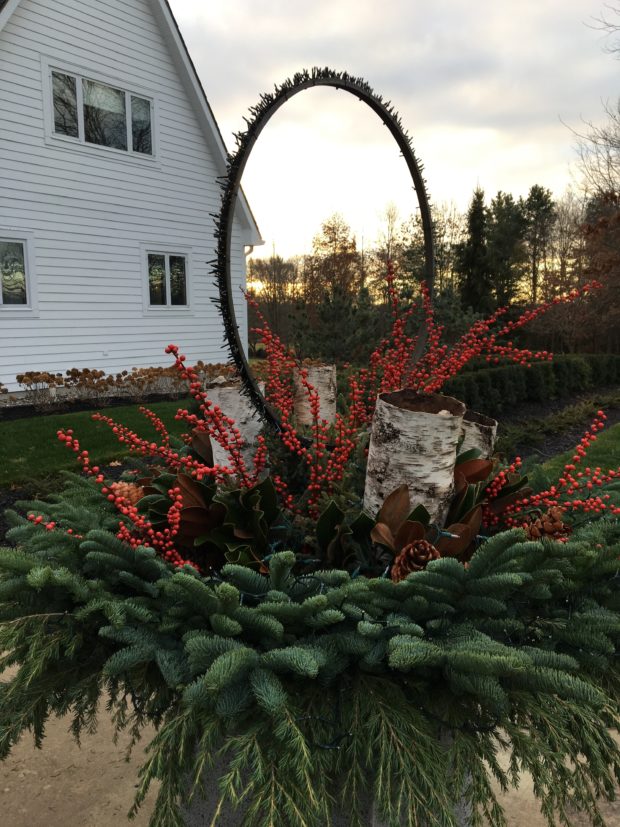 This is work that I am happy to share here. I greatly admire what they have done.
This is work that I am happy to share here. I greatly admire what they have done.
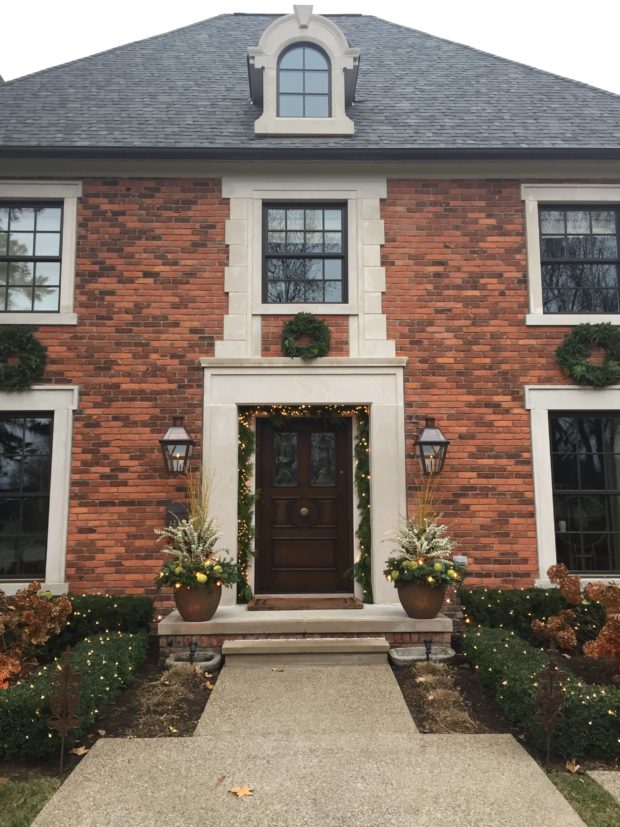 We provided the centerpieces for this pair of winter containers. Our client did the rest. Lovely, aren’t they?
We provided the centerpieces for this pair of winter containers. Our client did the rest. Lovely, aren’t they?
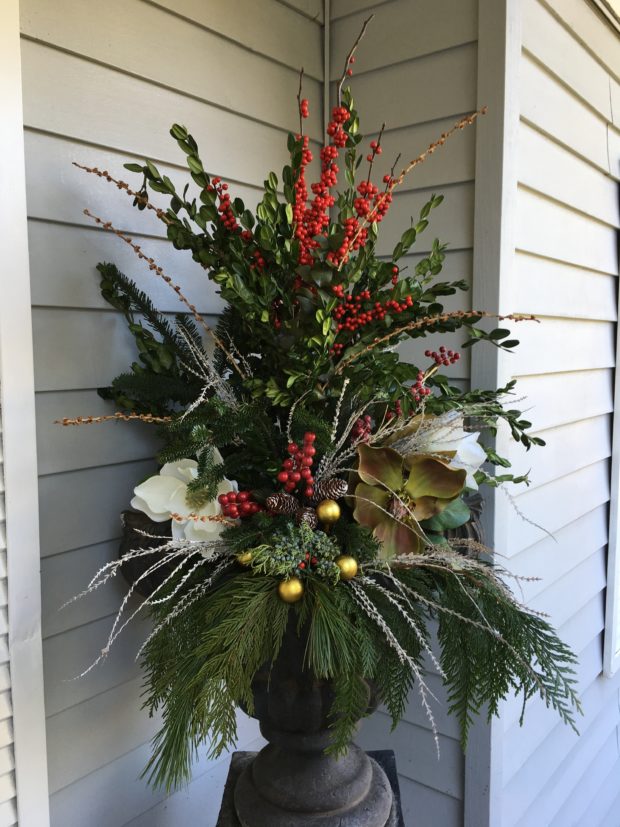 This planter was constructed by a client who shopped on line with us for some of her materials.
This planter was constructed by a client who shopped on line with us for some of her materials.
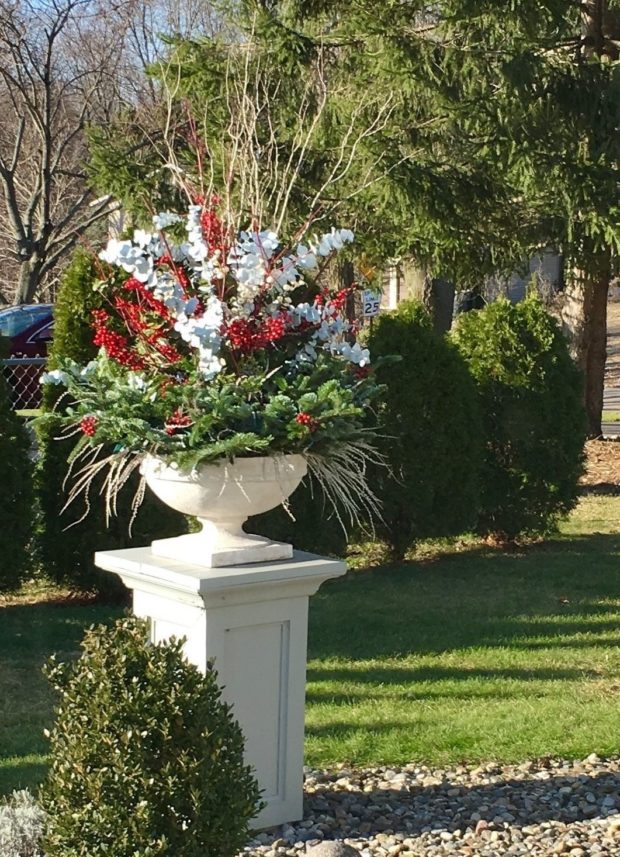 This client shopped at Detroit Garden Works for materials too.
This client shopped at Detroit Garden Works for materials too.
 These containers are the creation of a member of my group. I like that he had the enthusiasm to go home and make winter pots, after making them for others day after day.
These containers are the creation of a member of my group. I like that he had the enthusiasm to go home and make winter pots, after making them for others day after day.
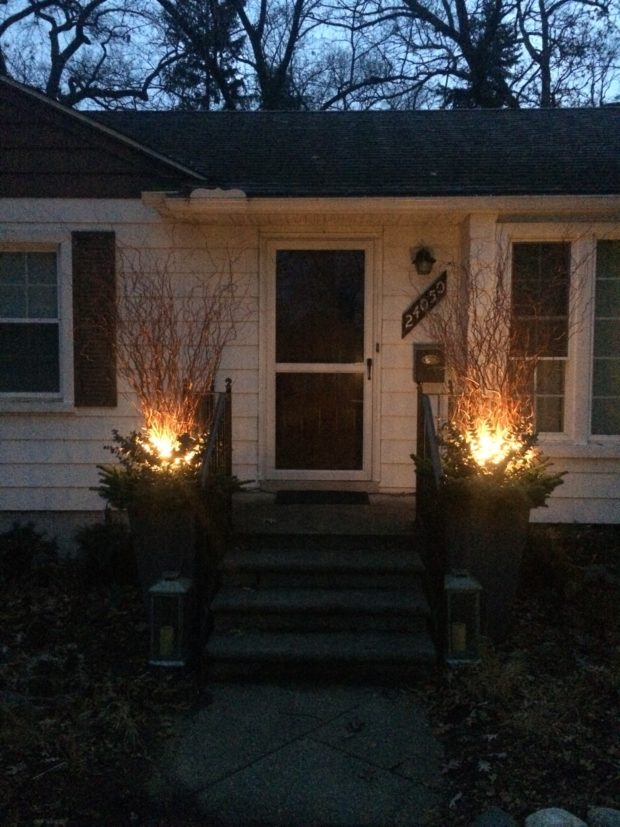 I truly enjoy what people say back to me about the garden.
I truly enjoy what people say back to me about the garden.
